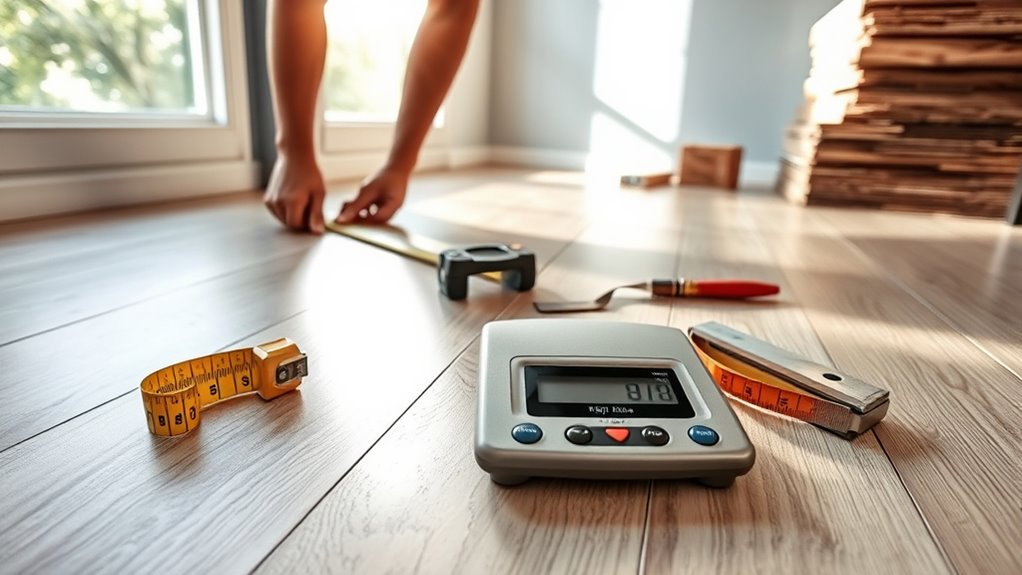When deciding how much to charge for laminate flooring installation, start by evaluating the project’s complexity, including room size, subfloor condition, and any architectural challenges. Next, calculate material and equipment costs, factoring in quality, underlayment, and tool rentals. Finally, research local market rates to guarantee your pricing stays competitive yet profitable, reflecting regional variations and service differentiation. Understanding these factors fully equips you to set a fair and strategic installation price.
Assessing the Scope and Complexity of the Installation

Before beginning your laminate flooring project, you need to thoroughly assess the installation’s scope and complexity to guarantee accurate planning and resource allocation. Start by evaluating the room dimensions, subfloor condition, and any architectural challenges like irregular shapes or thresholds. Understanding the specific installation techniques required—such as floating 床 or glue-down methods—directly impacts labor intensity and tools needed. Accurately gauging these factors helps establish a realistic project timeline, ensuring you allocate sufficient time for preparation, cutting, fitting, and finishing. This precise assessment empowers you to anticipate potential obstacles and streamline workflow, granting you greater control over the project’s freedom and efficiency. By mastering the initial evaluation, you set the foundation for a successful, professional laminate flooring installation.
Calculating Material and Equipment Costs
Calculating the total material and equipment costs requires a detailed inventory of all necessary components, including laminate planks, underlayment, adhesives, and trim pieces. You need to factor in the material quality, as higher-grade materials often increase durability but also raise costs. Don’t forget equipment rental fees for specialized tools if you don’t own them. To precisely calculate expenses, consider:
Accurately estimating laminate flooring costs means accounting for materials, quality, and any necessary tool rentals.
- Quantity and grade of laminate flooring planks required for the project area.
- Underlayment type and amount, critical for moisture protection and soundproofing.
- Necessary adhesives and trims, ensuring compatibility with selected materials.
- Equipment rental costs, including saws, spacers, and tapping blocks.
Researching Local Market Rates and Competitor Pricing

How do you guarantee your laminate flooring project stays within budget while maintaining quality? Conducting a thorough market analysis is essential. Start by gathering data on local market rates and competitor pricing to understand prevailing installation fees. This insight enables you to develop a competitive pricing strategy that balances profitability with customer appeal. Pay close attention to regional cost variations and service differentiators to position your offer accurately. Avoid underpricing, which can undermine perceived value, or overpricing, which may deter potential clients. By systematically analyzing competitors’ rates and aligning your pricing strategy accordingly, you preserve your financial freedom and market relevance. This disciplined approach assures your laminate flooring installation charges reflect true market dynamics, empowering you to make informed, strategic decisions confidently.




